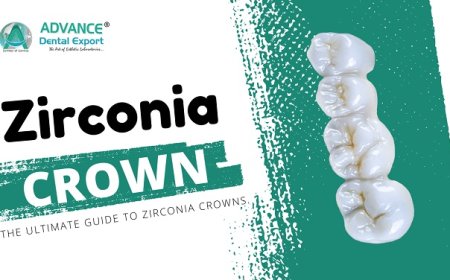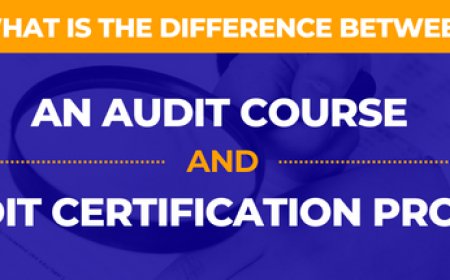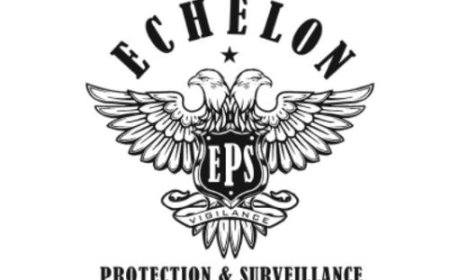How to Create Landing Page
How to Create Landing Page A landing page is a standalone web page designed for one specific purpose: to convert visitors into leads or customers. Unlike a homepage, which serves multiple functions—navigating users to different sections, showcasing brand identity, and offering broad information—a landing page is laser-focused. It eliminates distractions, guides users toward a single call-to-action
How to Create Landing Page
A landing page is a standalone web page designed for one specific purpose: to convert visitors into leads or customers. Unlike a homepage, which serves multiple functions—navigating users to different sections, showcasing brand identity, and offering broad information—a landing page is laser-focused. It eliminates distractions, guides users toward a single call-to-action (CTA), and is often the result of targeted advertising campaigns, email marketing, or paid search efforts.
Creating an effective landing page is not just about design or copywriting—it’s about understanding user psychology, optimizing for conversion, and aligning every element with a clear business objective. Whether you’re generating email sign-ups, promoting a product launch, collecting demo requests, or selling a digital download, the landing page is your digital salesperson. It works 24/7, regardless of time zones or staffing constraints.
In today’s competitive digital landscape, where attention spans are shrinking and user expectations are rising, a poorly constructed landing page can waste valuable traffic and budget. Conversely, a well-crafted landing page can dramatically increase conversion rates, lower customer acquisition costs, and improve return on ad spend (ROAS). This guide will walk you through the entire process of creating a high-converting landing page—from planning and structure to design, testing, and optimization.
Step-by-Step Guide
Define Your Goal and Target Audience
Before you open a design tool or write a single line of code, you must answer two fundamental questions: What do you want visitors to do? And who are they?
Your goal should be specific, measurable, and aligned with your broader marketing or business objectives. Common landing page goals include:
- Collecting email addresses for a newsletter
- Encouraging a free trial sign-up
- Scheduling a demo or consultation
- Purchasing a product or service
- Downloading a lead magnet (e.g., eBook, checklist, template)
Once your goal is clear, define your target audience. Who are they? What are their pain points? What language do they use? What motivates them? Create a brief buyer persona: age, job title, industry, challenges, goals, and where they encounter your offer (e.g., Google Ads, Instagram, LinkedIn).
For example, if you’re selling project management software to small marketing teams, your audience might be “Sarah, 32, marketing manager at a 10-person agency. She’s overwhelmed by disorganized workflows and needs a tool that integrates with Slack and Google Calendar. She reads blogs like HubSpot and follows marketing influencers on LinkedIn.”
Knowing your audience allows you to tailor your messaging, tone, visuals, and even the placement of your CTA. A landing page for B2B professionals will look and sound vastly different from one aimed at Gen Z gamers.
Choose the Right Landing Page Type
Not all landing pages are created equal. The structure and design depend on your goal. Here are the most common types:
- Lead Generation Landing Pages – Designed to capture contact information in exchange for something valuable (e.g., free guide, webinar, discount). These often feature forms with minimal fields.
- Click-Through Landing Pages – Used to warm up traffic before sending them to a product page or checkout. Common in e-commerce, these pages build desire and urgency before the sale.
- Sales Landing Pages – Focused on direct conversion. These pages include product details, testimonials, pricing, and strong CTAs. Often used for digital products or high-ticket services.
- Long-Form Landing Pages – Ideal for complex offerings. They use storytelling, detailed benefits, social proof, and FAQs to overcome objections. Common in SaaS and coaching businesses.
- Short-Form Landing Pages – Best for simple offers or audiences with high intent. Minimal text, one image, and a clear form. Great for paid ads with limited attention spans.
Select the type that best matches your goal and audience. If you’re offering a $7 eBook, a short-form page is sufficient. If you’re selling a $5,000 enterprise software solution, a long-form page with case studies and demo videos is essential.
Write Compelling Headlines and Subheadings
The headline is the first thing visitors see—and often the only thing they read. It must immediately communicate value and relevance.
Follow this formula: Primary Benefit + Target Audience + Unique Differentiator
Example: “Save 15 Hours a Week on Team Scheduling—The Simple Tool Used by 10,000+ Marketing Teams”
This headline tells the reader:
- What they’ll gain (time savings)
- Who it’s for (marketing teams)
- Why it’s credible (10,000+ users)
The subheading expands on the headline without repeating it. It should clarify the offer and reduce uncertainty. Avoid vague phrases like “Best Solution” or “Revolutionary Tool.” Instead, be specific:
“Our automated calendar syncs with Google Calendar, Outlook, and Slack—so your team never double-books again.”
Use active voice, power words (e.g., “discover,” “unlock,” “transform”), and avoid jargon. Test multiple headline variations using A/B testing tools to see which performs best.
Design for Clarity and Focus
Design is not about aesthetics—it’s about reducing friction. Every element on your landing page should serve the goal. Remove anything that distracts from the CTA.
Key design principles:
- One CTA per page – Multiple buttons confuse users. If you need secondary actions, make them subtle (e.g., “Learn more” linked to a blog post, not another form).
- Use whitespace generously – White space (or negative space) improves readability and draws attention to key elements. Crowded pages feel overwhelming.
- Apply visual hierarchy – Use size, color, and placement to guide the eye. The headline should be largest, followed by the subheading, then the CTA button.
- Choose a single focal color – Use one contrasting color for your CTA button (e.g., orange on a white background). Avoid using multiple bright colors.
- Optimize for mobile – Over 60% of web traffic comes from mobile devices. Ensure buttons are tappable, text is readable without zooming, and forms are easy to fill out on small screens.
Place your CTA above the fold (the portion visible without scrolling) for maximum visibility. But don’t avoid scrolling—long-form pages perform well when content is engaging and structured with clear section breaks.
Build a High-Converting Form
If your goal is lead generation, your form is the critical conversion point. The fewer fields, the higher the conversion rate—up to a point.
Best practices for forms:
- Only ask for essential information. For a free eBook, collect just name and email. For a demo request, add company and job title.
- Use inline validation to catch errors as users type (e.g., “Invalid email format”).
- Label fields clearly. Avoid placeholder text as the only label—it disappears when typing, causing confusion.
- Include a privacy assurance: “We respect your privacy. Unsubscribe anytime.”
- Use a clear, action-oriented button text: “Download Your Free Guide,” not “Submit.”
- Consider progressive profiling: Ask for minimal info upfront, then collect more over time via follow-up emails.
For high-intent audiences (e.g., users clicking a Google Ads ad for “best CRM for real estate”), you can ask for more details. But always justify why you need each piece of data.
Incorporate Social Proof and Trust Signals
People trust other people more than brands. Social proof reduces perceived risk and builds credibility.
Include these elements strategically:
- Customer testimonials – Use real names, photos, and job titles. “I increased my team’s productivity by 40% in two weeks.”
- Logos of trusted clients – If you work with recognizable companies, display their logos.
- Case studies – Short, story-driven examples showing measurable results.
- Star ratings and review counts – Especially effective for product pages.
- Media mentions – “As featured in Forbes, TechCrunch, and Harvard Business Review.”
- Security badges – SSL certificates, payment logos, or trust seals for e-commerce pages.
Place social proof near the CTA or form to reinforce confidence just before conversion.
Use Persuasive Visuals
Images and videos are powerful tools—but only if they’re relevant and high-quality.
Best practices:
- Use authentic photos over stock images. Real people in real situations build connection.
- If showing a product, use lifestyle imagery—how it’s used, not just a white-background shot.
- Video can increase conversions by up to 80%. Use a short (30–90 second) explainer video that answers: What is it? How does it work? Why should I care?
- Optimize image file sizes for fast loading. Use WebP format and compress with tools like TinyPNG.
- Always include alt text for accessibility and SEO.
Avoid decorative graphics, clipart, or overly stylized illustrations unless they align with your brand’s identity and enhance understanding.
Optimize Page Speed and Technical Performance
Speed directly impacts conversion rates. A one-second delay can reduce conversions by 7%.
Technical optimizations include:
- Minify CSS, JavaScript, and HTML files.
- Enable browser caching.
- Use a Content Delivery Network (CDN) to serve assets faster globally.
- Reduce server response time by choosing a reliable hosting provider.
- Lazy-load images and videos so they only load when scrolled into view.
- Avoid excessive plugins or third-party scripts (e.g., chat widgets, analytics tags) that slow down rendering.
Test your page speed using Google PageSpeed Insights or GTmetrix. Aim for a score above 85 on mobile and desktop.
Implement Tracking and Analytics
You can’t improve what you don’t measure. Set up tracking to monitor performance:
- Install Google Analytics 4 (GA4) to track page views, bounce rate, and conversions.
- Use UTM parameters on all links driving traffic to your landing page (e.g., from Facebook Ads or email campaigns) to identify which channels perform best.
- Set up conversion tracking in Google Ads, Meta Ads, or other ad platforms to measure ROAS.
- Use heatmaps (e.g., Hotjar) to see where users click, scroll, and drop off.
- Record session videos to observe real user behavior and identify friction points.
Track key metrics:
- Conversion rate (visitors who complete the goal)
- Bounce rate (visitors who leave without interaction)
- Average time on page
- Form abandonment rate
These insights will guide your future optimizations.
Best Practices
Align Your Landing Page with Your Ad or Traffic Source
One of the biggest mistakes marketers make is sending traffic from a targeted ad to a generic homepage. If your Facebook ad says “Get 50% Off Your First Month of Project Management Software,” your landing page must immediately reflect that offer. Discrepancies cause confusion and increase bounce rates.
Use consistent messaging:
- Match the headline and imagery from your ad.
- Repeat the same offer, discount, or incentive.
- Use the same color scheme and tone of voice.
This creates a seamless experience that builds trust and reduces cognitive load.
Use Urgency and Scarcity Ethically
Urgency and scarcity can drive action—but only if they’re genuine.
Effective examples:
- “Only 3 spots left for this week’s workshop.”
- “Offer ends in 2 hours.”
- “First 100 sign-ups get free onboarding.”
Avoid false claims like “Only 1 left!” when inventory is abundant. Misleading tactics damage trust and can lead to higher refund rates or negative reviews.
Test Everything with A/B Testing
Never assume you know what works. Use A/B testing (split testing) to compare two versions of your landing page:
- Headline A vs. Headline B
- Red CTA button vs. Green CTA button
- Long-form copy vs. short-form copy
- Video vs. static image
Use tools like Google Optimize, Unbounce, or VWO to run tests. Let each variation run until you reach statistical significance (usually 95% confidence level). Don’t stop tests too early based on early trends.
Test one element at a time to isolate what’s driving change. Once you find a winner, use it as the baseline for your next test.
Ensure Mobile Responsiveness
Mobile users expect fast, simple experiences. Test your landing page on multiple devices:
- Can the CTA button be tapped easily with a thumb?
- Is text legible without zooming?
- Do forms auto-fill correctly?
- Are images scaled properly?
Use responsive design frameworks like Bootstrap or Tailwind CSS. Avoid fixed-width layouts that break on smaller screens.
Keep Copy Concise and Benefit-Focused
People skim. They don’t read. Use short paragraphs, bullet points, and bold text to highlight key benefits.
Instead of: “Our software uses advanced algorithms to streamline your workflow and improve efficiency.”
Write: “Automatically sync tasks across teams. Save 10+ hours a week.”
Focus on outcomes, not features. People don’t buy software—they buy faster results, less stress, or more revenue.
Make Your CTA Impossible to Miss
Your CTA button should stand out visually and linguistically:
- Use contrasting colors (e.g., bright orange on white).
- Make it large enough to tap easily on mobile.
- Place it at the top, middle, and bottom of long pages.
- Use action-oriented verbs: “Start Free Trial,” “Get Instant Access,” “Claim Your Discount.”
- Avoid generic terms like “Click Here.”
Consider adding a secondary CTA below the fold for users who scroll but aren’t ready to convert yet—e.g., “Watch a 2-minute demo.”
Eliminate Navigation Menus
Navigation links (Home, About, Blog, Contact) are distractions. They give users an escape route. Your landing page should be a one-way street.
If you need to provide additional resources, link to them within the content (e.g., “Read our full case study here”) rather than placing global navigation at the top.
Optimize for SEO (Even Though It’s Not a Homepage)
While landing pages are often used for paid traffic, they can also rank organically—especially for long-tail keywords.
- Use a descriptive, keyword-rich page title: “Download Free Email Marketing Template for Small Businesses | [Brand].”
- Write a compelling meta description with a CTA.
- Include keywords naturally in headings and body text.
- Use schema markup for FAQs or products to enhance rich snippets.
- Ensure your URL is clean: /free-email-template, not /page?id=123.
Even if you don’t expect organic traffic, SEO-friendly structure improves crawlability and future flexibility.
Tools and Resources
Landing Page Builders
These platforms allow you to create landing pages without coding:
- Unbounce – Best for marketers. Drag-and-drop editor, A/B testing, and integrations with major ad platforms.
- Instapage – Powerful personalization features. Great for enterprise teams running multiple campaigns.
- Leadpages – User-friendly with pre-built templates. Ideal for beginners.
- ClickFunnels – More than landing pages—it’s a full sales funnel builder. Best for e-commerce and course creators.
- Elementor (WordPress) – If you’re already on WordPress, Elementor lets you build landing pages with full design control.
- Webflow – For designers who want pixel-perfect control without writing code.
Analytics and Optimization Tools
- Google Analytics 4 – Free, essential for tracking traffic and conversions.
- Hotjar – Heatmaps, session recordings, and feedback polls to understand user behavior.
- Google Optimize – Free A/B testing tool integrated with GA4.
- VWO – Enterprise-grade testing and personalization platform.
- GTmetrix – Analyzes page speed and provides actionable optimization tips.
- Ubersuggest – For keyword research and SEO audits.
Visual and Copy Resources
- Unsplash and Pexels – Free, high-quality stock photos.
- Canva – Easy design tool for creating banners, icons, and social graphics.
- Grammarly – Ensures your copy is clear, error-free, and professional.
- CoSchedule Headline Analyzer – Scores your headline for impact and SEO.
- Thesaurus.com – Find stronger, more persuasive synonyms.
Templates and Inspiration
- Landingfolio – Curated collection of beautiful, high-converting landing pages.
- Awwwards – Showcases award-winning web design, including landing pages.
- Pinterest – Search “high-converting landing page” for visual inspiration.
- Swipe File – Collect examples of landing pages you admire. Analyze what makes them work.
Real Examples
Example 1: Slack (Lead Generation)
Slack’s landing page for “Try Slack for Free” is a masterclass in clarity. The headline: “Slack: Where work happens.” Simple, benefit-driven, and instantly relatable.
The subheading explains the value: “Bring your team together in one place—with channels, direct messages, and powerful integrations.”
The CTA is prominent: “Get Started for Free” in bright purple. Below, they use customer logos (Airbnb, NASA, Spotify), testimonials, and a short video showing the product in action.
There’s no navigation. No footer links. Just one goal: get you to sign up.
Example 2: Dropbox (Click-Through)
Dropbox’s landing page for its referral program uses urgency and social proof effectively. The headline: “Get extra space—free.”
It shows a clear visual of storage space increasing as you refer friends. The form is minimal: just email. Below, it displays how many people have already joined and how much space they’ve earned.
The page is designed to make sharing feel rewarding—not like a chore. The CTA is repeated multiple times, and the entire experience feels gamified.
Example 3: HubSpot (Long-Form Sales)
HubSpot’s landing page for its CRM software is long but highly structured. It uses:
- A compelling headline: “The
1 CRM for Small Business.”
- Sectioned benefits with icons.
- Video testimonials from real users.
- A detailed comparison table vs. competitors.
- A strong, repeated CTA: “Start Free Trial.”
The page answers every potential objection before the user even thinks to ask. It’s educational, persuasive, and trustworthy.
Example 4: Grammarly (Short-Form)
Grammarly’s landing page for its free browser extension is minimal but effective. Headline: “Check your spelling and grammar instantly.”
One image of the extension in action. One form: email address. One CTA: “Download Free.”
Below, a short list of benefits in bullet points. No distractions. No navigation. Just a clear, frictionless path to download.
Example 5: Notion (Product-Led Growth)
Notion’s landing page invites users to “Start for free” and immediately lets them explore the product without signing up. This reduces barrier to entry.
The page showcases real user templates, explains use cases (notes, tasks, databases), and includes a live demo. The CTA is subtle but repeated. The design feels clean, modern, and intuitive—mirroring the product itself.
FAQs
What’s the difference between a landing page and a homepage?
A homepage is a hub—it introduces your brand, links to multiple sections, and serves general audiences. A landing page is a destination—it has one goal, one message, and no navigation. It’s designed for conversion, not exploration.
How long should a landing page be?
There’s no fixed length. Short-form pages (under 500 words) work for simple offers with high intent. Long-form pages (1,000+ words) are better for complex products, high prices, or skeptical audiences. The key is relevance—not length.
How many CTAs should a landing page have?
One primary CTA. Optional secondary CTAs (e.g., “Watch Video”) are acceptable if they support the main goal. Multiple competing CTAs reduce conversions.
Do landing pages need SEO?
Yes—even if you’re driving paid traffic. SEO helps if your page ranks organically, improves crawlability, and ensures your page is accessible and structured correctly. It’s future-proofing.
Can I use WordPress to create a landing page?
Absolutely. Plugins like Elementor, Beaver Builder, or Thrive Architect let you build high-converting landing pages without code. Just ensure you disable navigation menus and optimize for speed.
How do I drive traffic to my landing page?
Use paid ads (Google, Meta, LinkedIn), email campaigns, social media posts, influencer partnerships, or organic content (blog posts linking to the page). Always track your traffic sources with UTM parameters.
How often should I update my landing page?
Update it when your offer changes, your audience evolves, or your conversion rate drops. Regular A/B testing should be part of your routine. Even small tweaks—like changing button color or headline—can have big impacts.
What’s the average conversion rate for a landing page?
Industry averages vary. For lead generation, 2–5% is typical. For e-commerce, 3–7%. Top-performing pages exceed 10–20%. Your goal should be to outperform your industry benchmark through testing and optimization.
Can I create a landing page without coding?
Yes. Tools like Unbounce, Leadpages, and Canva require no coding. You can also use WordPress with drag-and-drop builders. Coding is only necessary if you want extreme customization or performance optimization.
What’s the biggest mistake people make when creating landing pages?
Trying to do too much. Adding too many CTAs, too much text, too many images, or too many navigation links. The most effective landing pages are simple, focused, and intentional.
Conclusion
Creating a high-converting landing page is not about luck—it’s about strategy, psychology, and relentless optimization. Every element, from the headline to the button color, should serve a single purpose: guiding the visitor toward action.
Start with a clear goal and a deep understanding of your audience. Build with clarity, not clutter. Use persuasive copy, strong visuals, and social proof to overcome hesitation. Test relentlessly, track everything, and never assume your first version is the best.
The most successful landing pages aren’t the prettiest—they’re the ones that make it effortless for the visitor to say “yes.” They remove friction, answer objections, and deliver on their promise. That’s the power of a well-crafted landing page.
Now that you have this comprehensive guide, take action. Pick one offer. Define your audience. Build one landing page. Launch it. Measure it. Optimize it. Then repeat. Over time, these small, focused efforts compound into significant growth.
Your next conversion is just one well-designed page away.

























